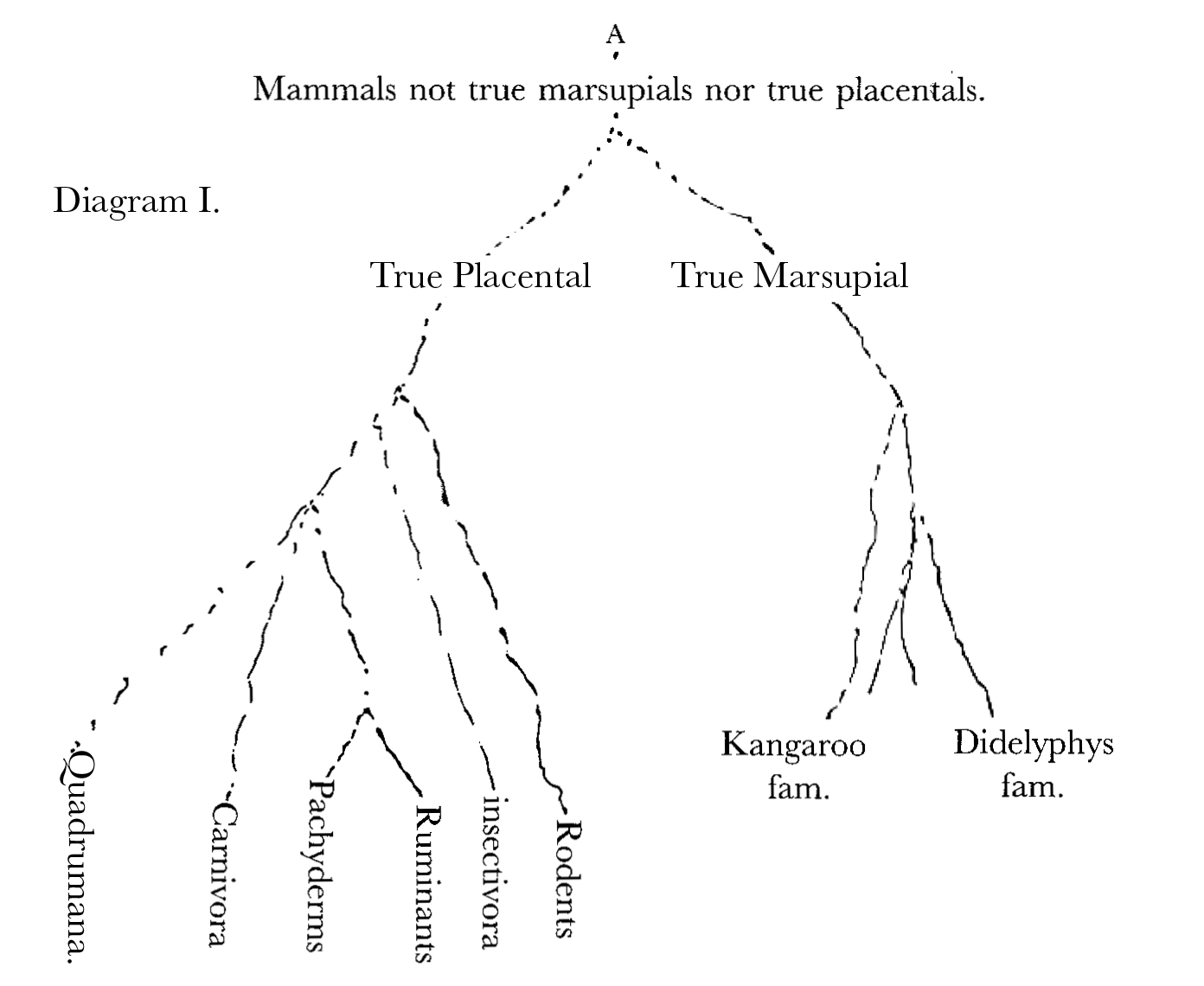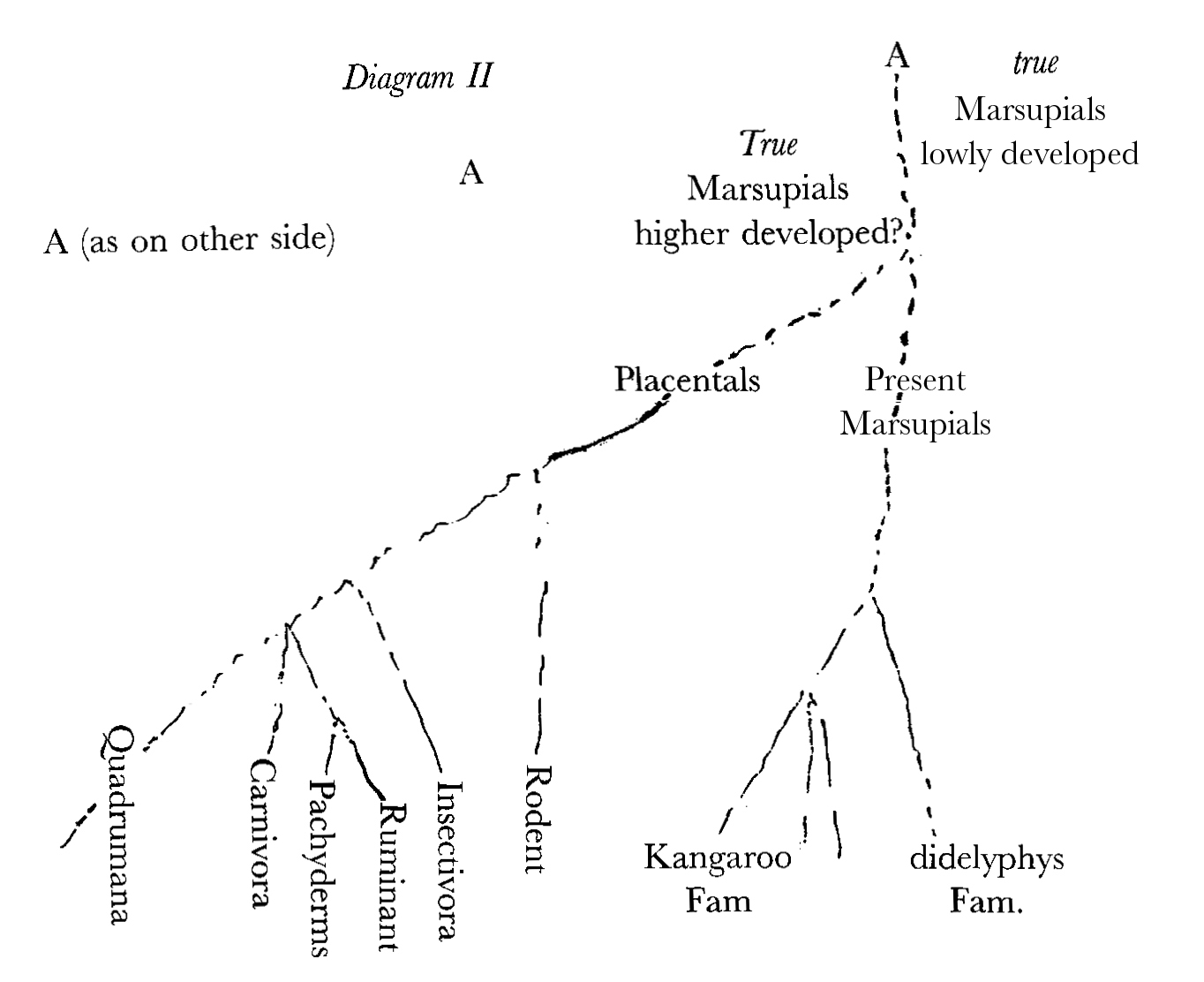To Charles Lyell 23 [September 1860]1
15 Marine Parade | Eastbourne
Sunday 23d
My dear Lyell
I got your letter of 18th just before starting here.2 You speak of saving me trouble in answering: never think of this for I look at every letter of yours as an honour & pleasure, which is a pretty deal more than I can say of some of the letters which I receive.— I have now one of 13 closely written folio pages to answer on Species!3
I sent off A. Gray’s Review before starting;4 please tell me in dozen words whether you think it good, for I have been thinking that I would ask Editor of Annals & Mag. of N. H. (who has reprinted Agassiz’s article)5 in fair play to reprint this; & I would attach A. Gray’s name to it. From giving so much of Pictet it seems to me very good. I intended to offer to pay for its printing. What think you? The Annals, I fear, has very small circulation.—6
Etty has stood her journey excellently:7 she & Emma drove in one carriage all the way here.—
I suppose you have heard of the Huxleys’ terrible loss in sudden death of their little Boy.8
I quite misunderstood you on Types. I have a very decided opinion that all Mammals must have descended from a single parint. Reflect on the multitude of details, very many of them of extremely little importance to their habits (as number of bones of head &c— covering of hair, identical Embryological development &c &c): now this large amount of similarity I must look at as certainly due to inheritance from a common stock. I am aware that some cases occur in which a similar or nearly similar organ, has been acquired by independent acts of nat. selection, but in most of such cases of these apparently so closely similar organs, some important homological difference may be detected.
Please read p. 193 beginning “The Electric organs” & trust me that the sentence “In all these cases of two very distinct species &c &c” was not put in rashly; for I went carefully into every case.—9 Apply this argument to the whole frame, internal & external, of mammifers, & you will see why I think so strongly that all have descended from one progenitor.— I have just reread your letter & I am not perfectly sure that I understand your point.
I enclose 2 diagrams showing the sort of manner I conjecture mammals have been developed: I thought a little on this, when writing p. 429 beginning “Mr. Waterhouse”.—10 (please read the paragraph.) I have not knowledge enough to choose between these two diagrams;11 if the Brain of Marsupials in embryo closely resembles that of placentals, I shd. strongly prefer nor. 2, & this agree with antiquity of microlestes. As a general rule I shd prefer nor I. diagram. whether or not Marsupials have gone on being developed or rising in rank from a very early period would depend on circumstances too complex for even a conjecture: Lingula has not risen since Silurian epoch, whereas other Molluscs may have risen.— Owen if he chose to attend to such view could work this out.12
I at first thought with you that there was no fossil Rodent in Australia; but I then had vague misgivings, so said nothing. with respect to Australia being particularly fitted for Marsupials, I have always thought it a gigantic hallucination of Owens.—13 Not to mention Rodents; the Dingo has been wild for an enormous period before the S. Australian Volcanic outburst.— Then look at number of species of Marsupials in Brazil. But strongest fact is New Guinea, a most humid country; & tenanted by Marsupials as exclusively (except one pig, which some doubt being endemic) by marsupials (some belonging to peculiar type, as the tree-kangaroos), as is Australia itself.
I daresay you know evidence of antiquity of Dingo in Australia: you will see references in my Dog-M.S:14 Ancient as the Dingo is, one cannot help suspecting that it was introduced by man; & if so, it bears on your subject of antiquity of man. If it could be shown that Dingo existed in some other country it would be pretty good evidence that it was not aboriginal in Australia: Lesson states that it is same with the dog of New Ireland:15 but Lesson is not to be trusted, & confounds the Dingo with the very distinct type of the Canis primæus of India.—
That is a good bit about grafting of roots, & the stumps kept thus alive. I remember reading the paper & shd. much like to have reference to it.16 But my impression is pretty strong that authors say that the case is confined to Coniferæ.— Perhaps we are thinking of something different: I refer to cut-down stumps (which in the fir-tribe never spring up again) but which are kept alive for years by their roots being inarched or grafted.—
I do not think multiple origin of dogs goes against single origin of man. (Agassiz’s remark, in Nott & Gliddon?? on coincidence of colour alone, so fleeting a character, does not go for much in his comparison of man & anthropoid apes.)17 All the races of man are so infinitely closer together than to any ape, that (as in case of descent of all mammals from one progenitor) I shd look at all races of man as having certainly descended from single parent.— I should look at it as probable that the races of man were less numerous & less divergent formerly than now; unless indeed some lower & more aberrant race, even than the Hottentot, has become extinct. Supposing, as I for one believe that our dogs have descended from 2 or 3 wolves, jackalls &c; yet these have, on our view, descended from single remote unknown progenitor. With domestic dogs the question is simply whether the whole amount of difference has been produced since man domesticated a single species; or whether part of the difference arose in the state of nature.— Agassiz & Co. think the Negro & Caucasian are now distinct species; & it is a mere vain discussion, whether when they were rather less distinct they would, on this standard of specific value, deserve to be called species.
I agree with your answer which you give to yourself on these points; & the simile of man now keeping down any new man which might be developed strikes me as good & new. White man is “improving off the face of the earth” even races nearly his equals.—
With respect to islands, I think I would trust to want18 time alone, & not to Bats & Rodents (N.B I know of no rodents on Oceanic isld. except my Galapagos mouse which may have been introduced by man) keeping down the development of other classes.— Still much more weight I shd attribute to there being now neither in islands or elsewhere no known animal of a grade of organisation intermediate between mammals, fish, reptiles &c, whence a new mammal could be developed.— If every Vertebrate were destroyed throughout the world except our now well established Reptiles, millions of ages might elapse before Reptiles could become highly developed on a scale equal to mammals; & on principle of inheritance they would make some quite new Class & not Mammals,—though possibly more intellectual!! I have not an idea, whether you will care for this letter, so speculative.—
Most truly yours | C. Darwin
[Enclosure]19
Birds as intermediate as Lepidosiren now is between Fish & Batrachians.—— This unknown form probably more closely related to Ornithorhynchus than to any other known form.—


Footnotes
Bibliography
Agassiz, Louis. 1857–62. Contributions to the natural history of the United States of America. 4 vols. Boston, Mass.: Little, Brown & Company. London: Trübner.
Agassiz, Louis. 1860. On the origin of species. American Journal of Science and Arts 2d ser. 30: 142–54. [Reprinted in Annals and Magazine of Natural History 3d ser. 6 (1860): 219–32.]
Correspondence: The correspondence of Charles Darwin. Edited by Frederick Burkhardt et al. 29 vols to date. Cambridge: Cambridge University Press. 1985–.
Duperrey, Louis Isidore. 1826–30. Voyage autour du monde … sur la Corvette de sa Majesté, La Coquille, pendant les années 1822, 1823, 1824 et 1825. Zoologie, par MM. Lesson et Garnot. 3 vols. Paris.
Origin: On the origin of species by means of natural selection, or the preservation of favoured races in the struggle for life. By Charles Darwin. London: John Murray. 1859.
Pictet de la Rive, François Jules. 1860. Sur l’origine de l’espèce par Charles Darwin. Bibliothèque universelle. Revue suisse et étrangère n.s. 7: 233–55.
Variation: The variation of animals and plants under domestication. By Charles Darwin. 2 vols. London: John Murray. 1868.
Summary
Hopes to get Asa Gray’s review of Origin republished.
Argues for single origin of mammals.
Encloses two phylogenetic diagrams indicating possible descent of mammals.
Comments on rodents, marsupials, and dingo in Australia,
and on a paper on the survival of stumps as a result of root grafting.
Argues that man had a single progenitor and consists of a single species.
Comments on destruction of non-white races.
Discusses introduction of rodents to islands by man.
Letter details
- Letter no.
- DCP-LETT-2925
- From
- Charles Robert Darwin
- To
- Charles Lyell, 1st baronet
- Sent from
- Eastbourne
- Source of text
- American Philosophical Society (Mss.B.D25.227)
- Physical description
- ALS 10pp, 2 diags
Please cite as
Darwin Correspondence Project, “Letter no. 2925,” accessed on 19 April 2024, https://www.darwinproject.ac.uk/letter/?docId=letters/DCP-LETT-2925.xml
Also published in The Correspondence of Charles Darwin, vol. 8


